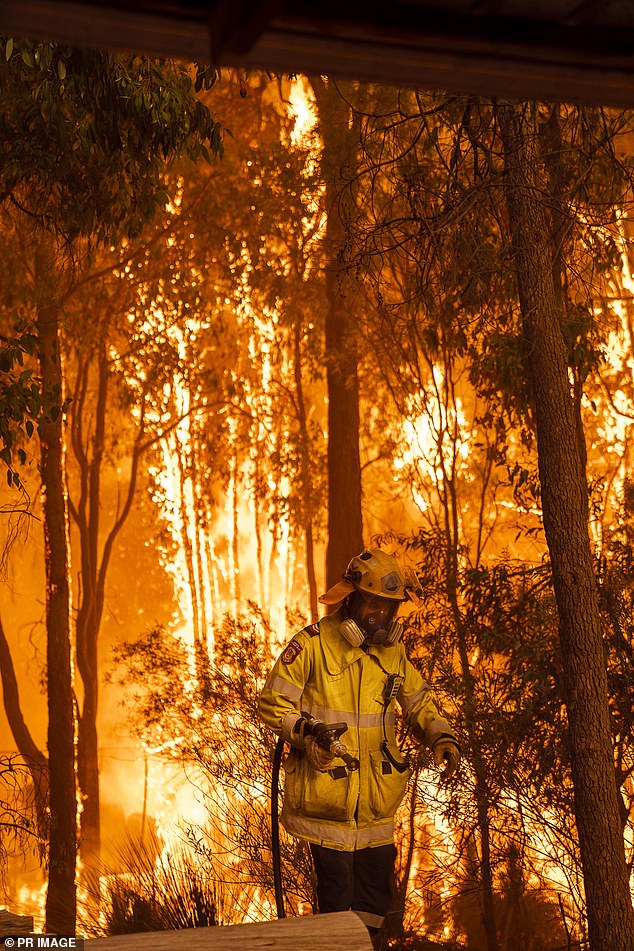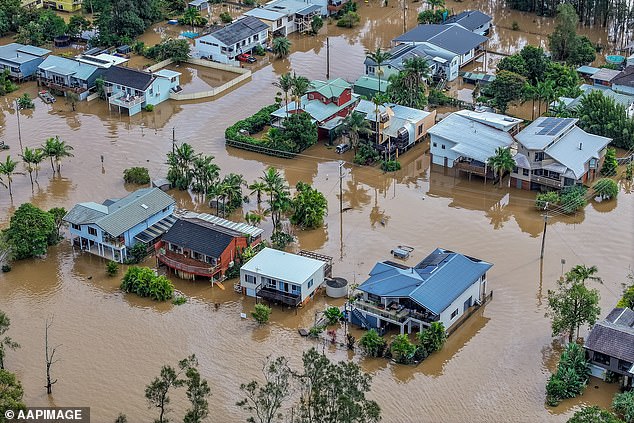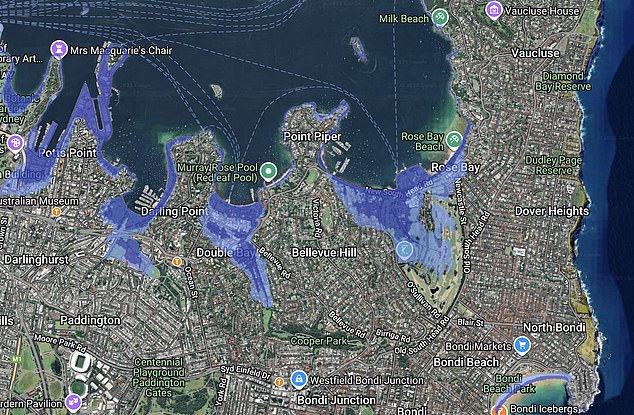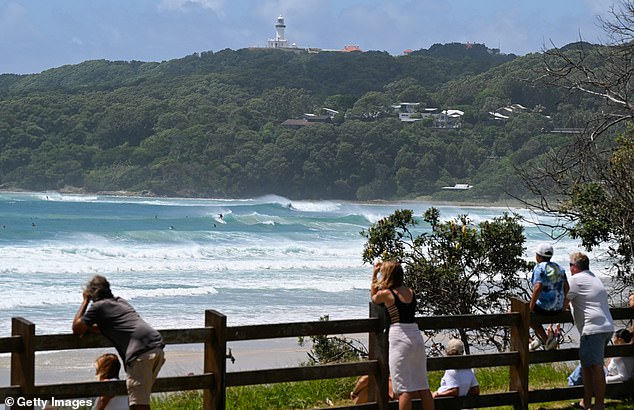The impacts of climate change could strip a staggering $600billion from Australia’s property market by 2050, a sobering new report has revealed.
The federal government’s first National Climate Risk Assessment, released this week, paints a stark picture for homeowners in high-risk areas.
The report warned rising sea levels, worsening bushfires, destructive floods, and violent storms could put more than 1.5million Aussies directly in harm’s way.
It could also cause damage to residential properties valued at up to $600billion.
Despite the warning, Aussie buyers continue to flock to these high-risk areas.
New data from real estate group Ray White analysed price growth in 85 suburbs identified in the Climate Council’s 2024 At Our Front Door report.
Of the 64 suburbs with sufficient sales data, 58 per cent recorded price growth over the past year, averaging 5.8 per cent, nearly identical to the national trend.
Some of the strongest growth occurred in South Australia‘s Adelaide Hills, where nearly every home is considered at extreme bushfire risk.

The federal government’s first National Climate Risk Assessment revealed $600billion could be wiped from property values (pictured, fires in Chidlow, Western Australia)

Areas prone to flooding, like Maitland (pictured) could become entirely uninsurable
Suburbs like Stirling, Heathfield, Crafers West, and Aldgate posted annual gains of up to 12.5 per cent, with median prices exceeding $1.3million.
Other high-risk coastal areas also saw major gains.
According to Cotality data, the top 10 local government areas for seller profits in the June quarter included Kiama, Byron Shire, Cottesloe, Surf Coast, and several Sydney councils such as Waverley, Northern Beaches, and Woollahra.
Median profits in these areas ranged from $575,000 to $758,000.
Allegra Spender, the Federal MP for Wentworth, voiced her concern over the report, which categorised a number of suburbs in her electorate as high-risk.
‘The suburbs of Darlinghurst, Double Bay, and Darling Point are specifically identified in this report as particularly vulnerable to rising sea levels,’ Spender said.
‘We have to take strong action now to create a safer future for all Australians.’
The trend is mirrored across the east coast.

The above map shows the impact of rising sea levels in leafy suburbs in Sydney’s east
Towns like Palmers Island, Crangan Bay, East Wardell, Seahampton, and Bucketty in NSW continue to attract buyers, despite the risks of flooding and fire.
Ray White Chief Economist Nerida Conisbee said lifestyle trumped risk for many Australians.
‘For many buyers, the appeal of scenic locations and premium amenities outweighs the long-term dangers of climate exposure,’ she told realestate.com.au.
In Queensland, demand remains strong in high-risk areas including Groper Creek, Cunnamulla, and Brookstead.
In Victoria, towns such as Hollands Landing, Manangatang, and Shepparton, all flagged for climate vulnerability, are still seeing solid interest.
But signs of strain are emerging.
Up to 42 per cent of high-risk suburbs recorded price declines, particularly in lower-value coastal towns and some prestige markets.
Several bushfire and flood-prone communities in NSW saw values fall, suggesting some buyers may finally be factoring in climate threats.

Housing prices continue to rise in areas deemed most at risk from climate change (pictured, the popular holiday hotspot Byron Bay in NSW’s northeastern corner)
Even in areas still experiencing growth, financial pressure is beginning to mount.
According to the National Climate Risk Assessment, over one million homes will fall into ‘very high-risk’ zones by 2050, rendering them effectively uninsurable.
In some regions, insurers have already pulled out entirely, leaving homeowners with properties that are uninsurable, unfinanceable, and difficult to sell.
Experts warn the real tipping point may come when banks, regulators, and governments tighten their response, through tougher building codes, lending restrictions, or more frequent extreme weather events.
